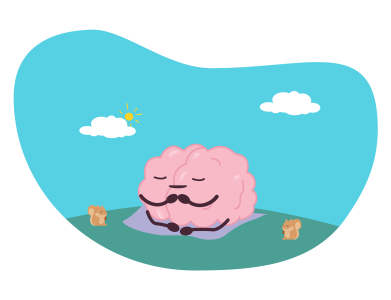This article will teach you more about child psychology and how to change your child’s behavior!
Many different factors might contribute to a child exhibiting undesirable or unexpected behaviors, such as tantrums, emotional outbursts, or a lack of self-control. Biological factors, such as hunger or exhaustion, can also play a role. Problems in communication may arise because of academic difficulties. Other times, it’s because they’re having an emotional crisis and can’t deal with or articulate their feelings. Their surroundings may also have an effect on their actions.
What is Normal Behavior for a Child?
Normal child behavior is conditional on a number of factors, including the child’s age, personality, and level of physical and emotional maturity. When a child’s actions are inconsistent with or cause disruption to family life, it may be a sign of concern. When evaluating what constitutes “good” or “normal” behavior, it is common practice to consider the social, cultural, and developmental contexts. If you know the normal development of a child at each age, you’ll be better able to assess whether or not your child’s actions are out of the ordinary.
Keep in mind that no kid is perfect. Your child’s pediatrician, early education center, and elementary school can all provide valuable insight into what you can expect from your child at each stage of growth and development.
How to Change a Child’s Behavior
Children are more likely to repeat a behavior if it is praised and less likely to do so if it is ignored. If you reward and punish the same behavior at various times, your child will become confused and may stop behaving as you expect them to. You have three options when you notice an issue with your child’s behavior:
Decide that the child’s actions are not problematic because they are normal for a child of this age.
Make an effort to put a stop to the behavior by isolating it or disciplining it.
Reward your child whenever they exhibit the desired behavior.
The Way to Better Child Behavior
Ignoring bad behavior is an effective strategy for changing it. With time, this method proves to be the most effective. If you want the behavior to stop immediately, the time-out technique can help.
Time-out method
Make a list ahead of time of the actions that will result in a time-out (usually these are tantrums or aggressive or dangerous behavior). For a time out, pick a safe and quiet spot, like a chair, a corner, or a playpen. A car or nearby seating space can serve as a temporary time-out room when you’re away from home.
Tell the child at the moment that what they are doing is inappropriate and that if it continues, you will have to put them in timeout. Try not to look irritated and keep your cool. The time-out area is where you should quietly take your unruly child if the behavior persists.
Know how long your child has been in timeout. Use a timer to help your youngster understand when their time out is up. Children should start their time out immediately after the undesirable conduct or once they have calmed down. There should be no talking to the child, but you should also not leave the child’s sight or hearing range. If the child leaves the time-out area before the time is up, the timer should be reset and the child should be returned there gently. After a set period of time, the child should be free to leave the time-out area. Instead of dwelling on wrongdoing, focus on how you may positively influence future actions.
Encouraging a new and desired behavior
Using a reward system can be an effective method of rewarding desirable behavior. When kids see that good behavior is rewarded and bad behavior is punished, they learn to behave better. It works best on children over the age of two. It could take up to two months for the effects to become evident. The ability to exercise patience and keep a behavior journal can be very useful for parents.
Select one or two habits you’d like to change (for example, bedtime habits, teeth brushing, or toy cleanup). Pick out something you know your kid will be happy to receive. Good rewards include reading a story, staying up an extra half hour, eating something special, or staying up later than usual. For older kids, stickers or points toward a prize or privilege can be effective rewards as well.
Convey to the child what you want them to do and what they will get for it. As an illustration, you could say something like, “If you change into your jammies and brush your teeth before this TV show is over, you can stay up a half hour later.” Put in a single request for the desired action. Reward the child if they follow your instructions. You should assist the kid if required, but try to keep your distance. In the beginning, a child may choose to receive a parent’s attention rather than a reward since any attention from parents is so rewarding to them, even negative attention.
With this method, you can avoid having to exert authority over your children. But if your kid chooses to disobey you, don’t make him or her feel bad about it. She or he will not just be rewarded in any way.
Some Good Ways to Reward your Child
Beat the Clock (suitable for a sluggish child)
Give the kid something to do. Prepare a timer. If your child finishes the activity before the buzzer sounds, they get a reward. Determine your child’s “best time” to complete the job and add five minutes to that.
Gaming for Good Behavior (good for teaching a new behavior)
Create a chart with a small list of desirable actions and reward the student with a star each time you observe one of them. Give your child a gift after he or she has achieved a specific number of stars (depending on the child’s age).
Excellent/Poor Performance (best method for difficult, highly active children)
In a short period (about an hour), mark a chart or your child’s hand each time you notice him or her exhibiting a nice behavior. Mark the chart when you observe positive behaviors such as calm play, problem-solving without fighting, picking up toys, and reading a book. Give your kid a treat after they’ve earned a certain grade. As an alternative, you might deduct points whenever undesirable conduct happens. If you decide to go this route, make sure to only reward your child if there are more stars than minus signs.
Creating Quiet Time (very Useful While Preparing food)
Instruct your child to engage in some peaceful play time, either independently or with a sibling (maybe 30 minutes). Check on your child periodically (every 2–5 minutes, depending on the child’s age) and give a gift or a token for every few minutes they are quiet or playing well. Continue rewarding your child for each period of quiet or good play, but increase the amount of time between checks from every two to five minutes to every 30 minutes.
The Bottom Line
Some parents choose to discipline their children physically (through spanking) in order to prevent further misbehavior. The main problem with this approach is that although the child’s negative behavior is temporarily suppressed, the parent is not taught how to effectively modify the child’s behavior. In fact, all you’re doing when you discipline your child is helping him or her learn to make good decisions in the future. Your child is more likely to return to undesirable conduct if he or she is unaware of an alternative. In addition to having a declining effect over time, physical punishment might provoke violent behavior in children. In extreme cases, it might be considered child abuse. When possible, alternative forms of punishment should be employed instead.







